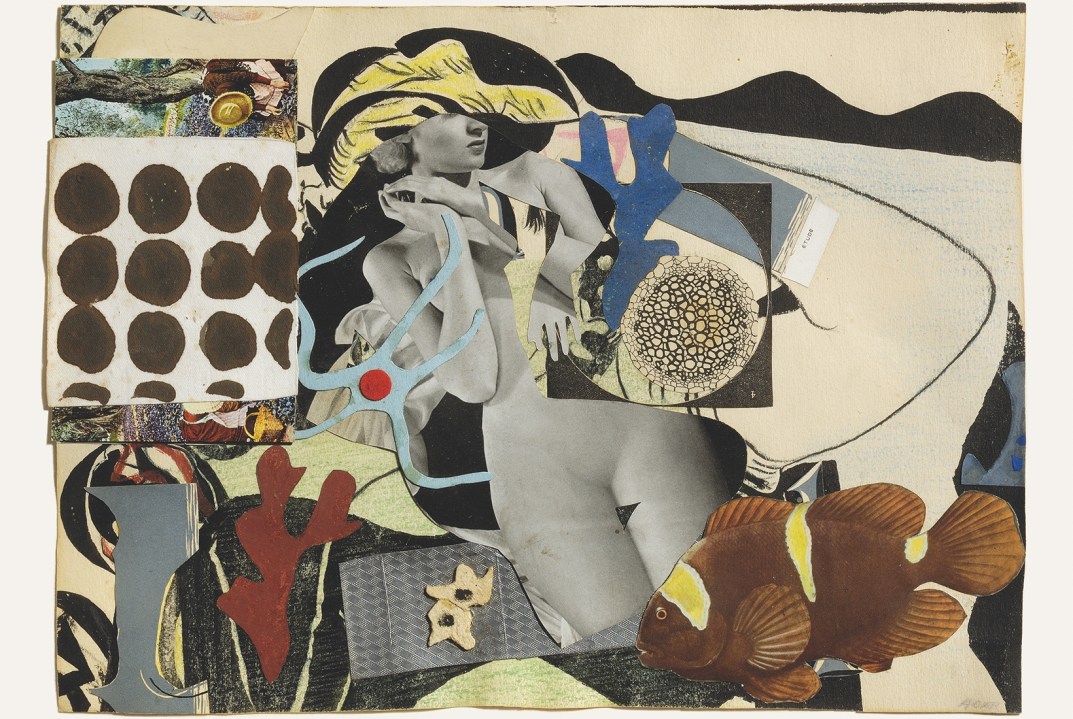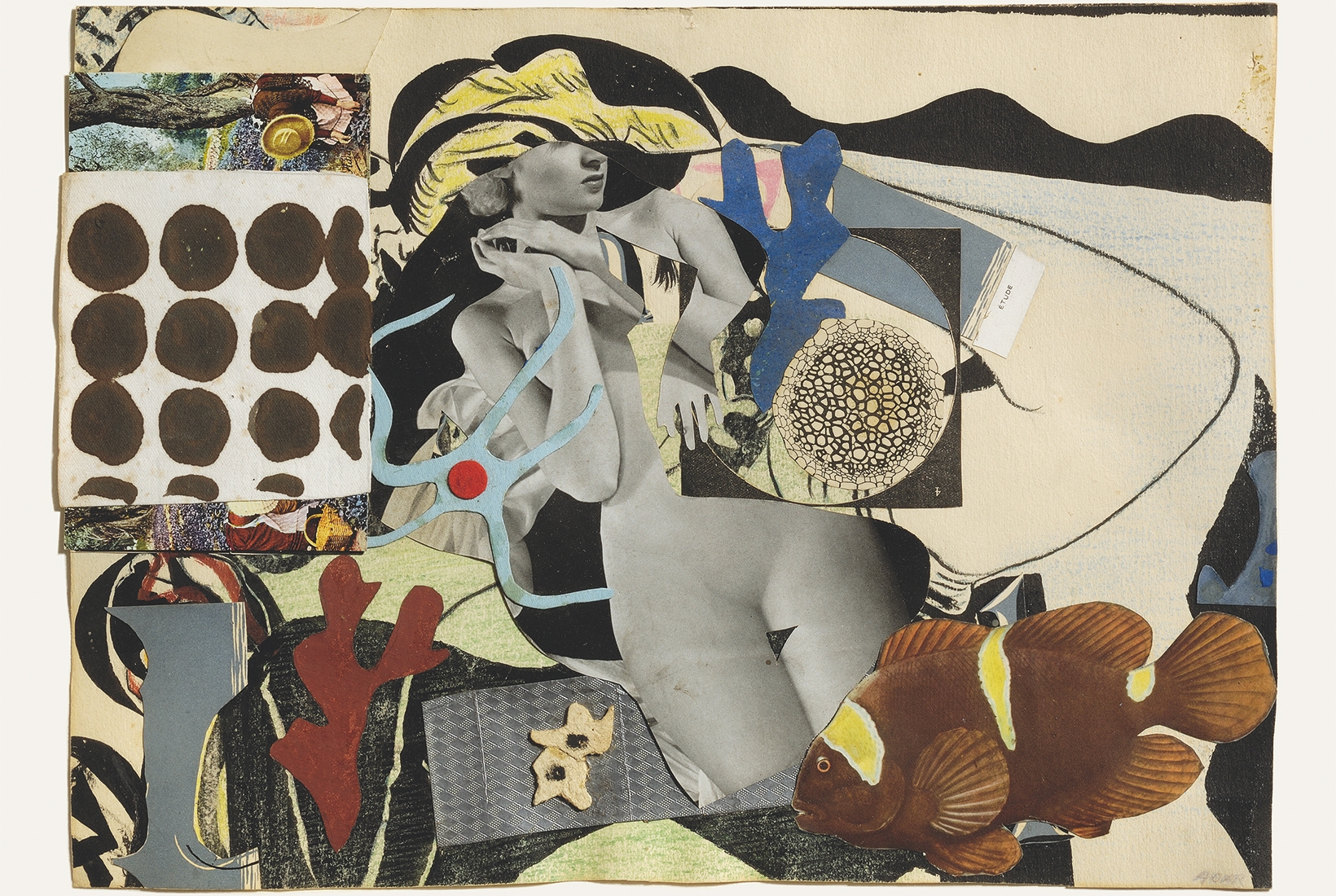Heads turn, strangers gawp, matrons tut or look in envy. A man doffs his bowler hat knowing when he is outdone. The model walking imperturbably along a London street is Eileen Agar, her headwear the ‘Ceremonial Hat for Eating Bouillabaisse’, encrusted with crustaceans, spangled with starfish. If the Little Mermaid,in her leggy period, had been invited to Ascot, she might have worn something like this. A British Pathé newsreel of Agar wearing the same hat plays on a loop in the Eileen Agar: Angel of Anarchy exhibition at the Whitechapel Gallery. (You can also see it on YouTube.) About 50 seconds in you catch her trying not to smile.
‘Life’s meaning is lost without the spirit of play,’ Agar wrote in one of her notebooks. ‘In play all that is gay, lovely and soaring in the human spirit strives to find expression. To play is to yield oneself to a kind of magic. In play the mind is prepared to accept the unimagined and incredible, to enter a world where different laws apply, to be free, unfettered and divine.’ This show is unfettered fun from start to finish. Agar’s exuberance bursts forth in drawing and collage, painting and curious assemblage.
No prim Victorian Miss ever cut and pasted a composition as lawless as Agar’s Untitled Collage (1936)
She was born in Buenos Aires on 1 December 1899 to a Scottish industrialist father and an American heiress mother. She was sent to school in England aged six and after the encouragement of Lucy Kemp-Welch, a teacher at Heathfield, she studied under the painter Leon Underwood at the Brook Green School of Art before taking up a place at the Slade in 1921. Her father’s death left her with an inheritance and the liberty to do as she pleased. She was elfin in person, impish in spirit.









Comments
Join the debate for just £1 a month
Be part of the conversation with other Spectator readers by getting your first three months for £3.
UNLOCK ACCESS Just £1 a monthAlready a subscriber? Log in